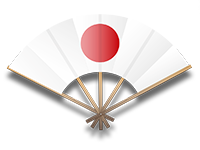Supplied by Jumpei Matsumoto Chief National Kendo Coach
From the original writing of Noboru Shigeoka Hanshi 9th Dan
I) Practicing Kata helps one to:
1. Establish adequate Kiai and spirit
2. Understand the principle of Sen (taking the initiative)
3. Control your mind
4. Establish natural Reiho (etiquette) and calmness in behavior
5. Establish correct posture
6. Improve footwork
7. Learn how to read the opponents’ movements and mind
8. Move and react quickly
9. Correct your bad habits
10. Understand about distance
11. Understand the law, reason, rationality and logic of Kendo
12. Establish your Kihin (elegance in presence), Fu-Kaku (noble presence) and Kigurai (noble bearing – pride in attitude)
II) Points to remember when practicing Kata
1. When moving forward and backward you should hold your breath whilst maintaining a good balance of spirit and mind. When moving forward, firstly you should breathe in deeply and continue to move in holding this breath, until exhaling with the utterance of either `Ya’ or `Toh’. The strike should be perfected with an awareness of Tanden (the lower part of the abdomen). When moving within Ma-ai, a diaphragmatic breathing method should be exercised quietly so that the opponent will not notice your breathing pattern.
2. In Kata the movements are pre-arranged, however one should exercise a freedom of thought and Uchidachi should consider various ways of potential Seme in the attacks, in order to break through Shidachi’s pre-arranged defense, strikes or counter-attacks, try to use this imagination to make this as real as possible. This will also create a high level of spiritual tension.
3. Shidachi should practice all of the techniques with a quick reaction against the strikes made by Uchidachi, but not by hasty or rushed actions. Both Uchidachi and Shidachi should maintain enough tension from the first Rei until the last Rei.
4. Uchidachi should strike when the harmony in the breathing coming from both sides meets and when the level of spiritual tension from both sides reaches an adequate point. Uchidachi as a teacher initiates his/her spirit and encourages and helps to establish Shidachi’s spirit and in turn should teach the opportunity for the strikes.
5. Shidachi should maintain the spirit of Seme or Sen and even though the movements are pre-arranged, he/she should not just wait for Uchidachi’s strikes to happen. When within Ma-ai [see foot note on this particular Ma-ai], he/she should win in spirit by Seme firstly, inviting Uchidachi to attack and therefore creating a reaction against the strike and then to win with technique.
6. When striking, always pull the left foot towards the right foot. The shoulders should be relaxed whilst maintaining good tension in the Tanden, this way you can strike correctly with the back and the lower part of the body. Cut by pushing the sword away from the body with the right hand and by pulling it back with the left hand towards the body. Only in this way can a Japanese sword cut.
Foot note on Ma-ai.
According to the teaching of Noboru Shigeoka Hanshi 9th Dan: The Ma-ai referred to here in item 5, is when engaging in the Issoku Itto no Mai, which is a particularly dangerous distance to enter into, as it could become a mutual position where your opponent may also be able to implement a strike from, so extreme caution should be exercised.This also includes any closer distance after Issoku Itto, between and including Chikama.
Translation by Kazuyo Matsuda
